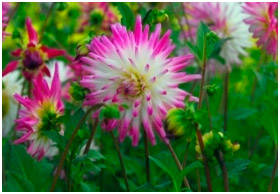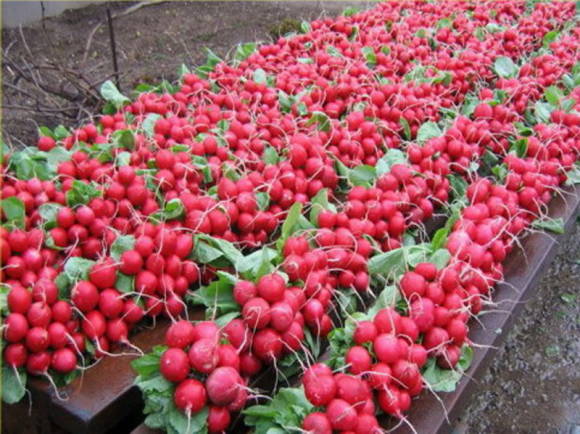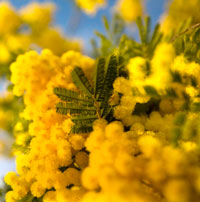
Almost all types of verbena originate from Latin America. You ask, what does Versailles have to do with it? Despite the fact that he played a significant role in the fate of our heroine - tough vervain.
Verbena hard came to Europe around 1820 thanks to Dr. John Gillis. This was the time when many plants in South America penetrated into the Old World thanks to engineers who developed South American copper deposits. The plant was quickly appreciated and soon found itself in three large French gardens - Versailles, Malmaison and Fontainebleau, decorating them with a truly royal purple purple of their inflorescences.
The first description of the plant was made by the German botanist Kurt Polycarp Joachim Sprengel in Systema Vegetabilium in 1827, although other authors suggested recognizing the hard verbena as a subspecies of Buenos Aires verbena (see Verbena of Buenos Aires). Nevertheless, it has established itself as an independent botanical species.
Despite the long history of cultivation, we have this verbena only recently. At home - in Brazil, Bolivia and Argentina, as well as in other warm countries, it is an evergreen perennial plant that blooms for 4-5 months. Many varieties have long been bred.
In temperate climates, this verbena is grown as an annual, as it is winter hardy only up to -10 degrees. At the same time, flowering lasts from July to September, i.e. up to 2 months.

Verbena hard (Verbenarigida) got its name for the very tough, often rough leaves. Even the name Sand Paper Verbena is used in everyday life. And for the veins pressed in from above and protruding in the lower part of the leaf, it has another Latin name - verbena vein, or wrinkled (Verbenavenosa).
Its leaves are narrow, oblong, 5-7.5 cm long, incised-toothed along the edge, dull green, sitting on tetrahedral low-branched stems, covering them with bases. The tops of the stems bear spike-shaped inflorescences, consisting of the main and two lateral spikelets. At first, the inflorescences are dense, as they bloom, they loosen and stretch up to 5 cm in length. Flowers with spikelets are small, 0.5 cm in diameter, rather bright, lilac or lilac-pink. There are hundreds of them in the inflorescence. The flowers are fragrant, butterflies willingly visit them.
There are varieties of paler colors - lilac-pink, pale-silver-blue, but they are not as good as purples.
- Santos purple - a new cultivar with purple flowers without aroma.
Stems up to 60 cm long, often lodged, although the plant has a common name - Slender vervain. But this allows it to be used not only for flower beds and mixborders, but also for container growing, for hanging baskets and container compositions, in which it forms beautiful cascades.

As companions of this verbena, you need to choose plants that bloom at the end of summer - cereals (for example, hairy pinnacle), late-flowering perennials (yarrow, crocosmia) are suitable. This plant can be planted among low dahlias and filled in the spaces between roses, like lavender, which is often recommended for this.
Verbena tough can be both an accent plant and a curb along the paths. She is good in small gardens and patios. Suitable in habit and color for the creation of Mediterranean gardens and prairie gardens.
Flowers are cut for bouquets. If you regularly cut the stems and remove the leaves at the bottom so that they do not rot in the water, the bouquet will last 9-10 days.
Growing conditions
Verbena tough can be attributed to thermophilic, but unpretentious plants. The main thing she needs is an open, sunny place and well-drained neutral soil.
The plant is drought and heat resistant, but grows best with regular deep, but not excessive watering.

Reproduction
The plant is propagated by seeds, which are sown in early spring. The seeds are germinated in the dark at a temperature of + 21 ... + 24 ° C, watering very carefully, not overmoistening the soil.They sprout for a long time, 3-4 weeks.
The grown seedlings are dived into separate pots and kept at a temperature of + 16 ... + 18оС. The seedlings are fed weekly with a complex mineral fertilizer with trace elements and potassium predominates (in a half dose). Sometimes calcium nitrate is added. They are planted in open ground with the end of frost (11-13-week-old plants).
There is another possibility as well. Verbena hard has tuberous thickened rhizomes, for which it is also called Tuberous verbena. In the fall, before the onset of frost, you can dig them up and try to preserve them until spring, like dahlia tubers.







